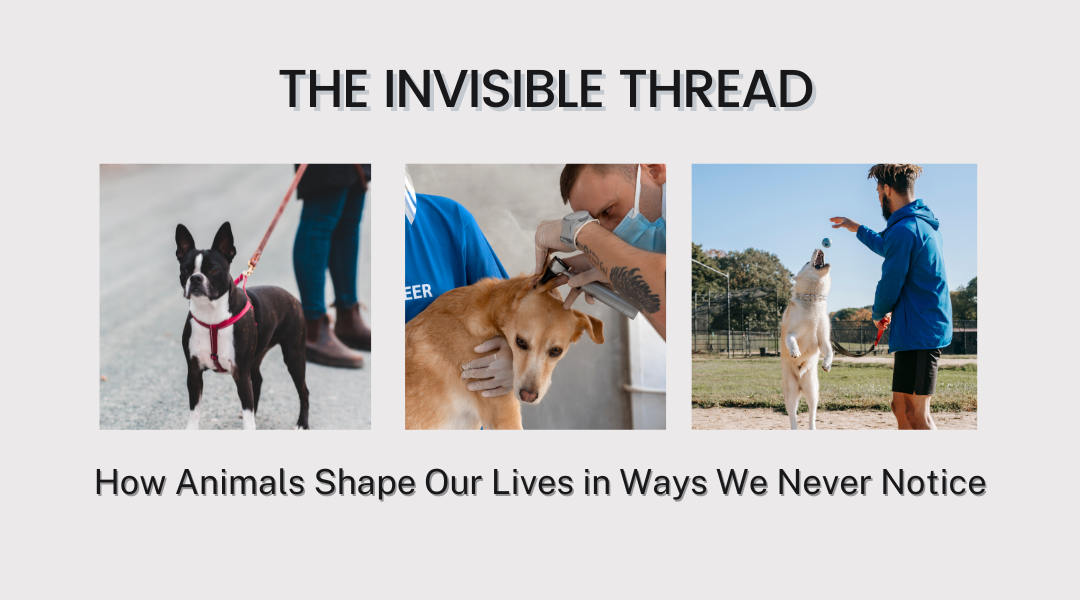The First Time You Felt It
Remember the first time an animal truly saw you? Not just looked at you, but recognized you? For me, it was a scrappy orange tomcat who used to wait by my elementary school bus stop. He’d bump his head against my shins like we’d made a secret pact. That’s when I realized—animals don’t just share our world. They understand it, and us, in ways we’re still trying to grasp.
We’ve been sidekicks to animals since before history began. Take those prehistoric cave paintings—early humans didn’t just sketch mammoths for fun. They were capturing the first love letters to creatures that fed them, protected them, and maybe even kept them company around the fire. Fast forward to today, and that bond has evolved into something wilder: dogs with their own Instagram therapists, cats who out-earn CEOs on YouTube, and horses that heal veterans’ trauma just by letting them brush their manes.
The Unexpected Architects of Civilization
Let’s talk about the real unsung heroes of ancient Egypt. Sure, the pharaohs got the pyramids, but cats? They got worshiped. Picture this: a farmer in 1200 BC accidentally steps on his cat’s tail. Next thing he knows, his neighbors are chasing him with hoes. That’s how serious it was. These weren’t just pest control—they were furry little deities who doubled as matchmakers (thanks to Bastet’s love-goddess side gig).
Meanwhile, over in Mongolia, nomads were building an empire on horseback. Genghis Khan’s armies didn’t conquer half the known world because they were tough—they did it because their horses could outrun storms. Those riders slept curled against their horses’ bellies for warmth, whispering strategies into twitching ears. Try that with a Jeep.
The Science Behind Why Your Dog Gets You
Here’s something they don’t tell you in pet stores: when your dog stares into your eyes, it triggers the same hormonal cocktail as a mother cradling her newborn. That’s not training—that’s 15,000 years of co-evolution saying, “You’re my person.” And cats? Their purr vibrates at the exact frequency (25-150 Hz) that heals bones. They’re basically walking, napping, occasionally judgmental ultrasound machines.
But the real magic happens in the mundane:
- That elderly man in Tokyo whose only daily conversation is with his canary
- The way supermarket clerks suddenly smile when someone walks in with a parrot on their shoulder
- How wildfire survivors describe holding their trembling dogs as the only thing that kept them grounded
Modern Myths We’re Getting Wrong
We’ve turned pets into accessories—organic kibble, designer sweaters, anxiety meds for Goldendoodles. But we’re missing the point. In Istanbul, street cats are considered municipal employees (their job: keeping the city’s soul intact). In Nepal, a temple’s sacred rats are fed first before worshippers eat. These aren’t quirks—they’re reminders that animals aren’t in our lives. They shape them.
Try This Tomorrow
Notice what you usually ignore:
- The crow on your fire escape that remembers your face
- The spiders in your basement eating the mosquitoes you hate
- That one squirrel who’s always watching you like it’s got a bet riding on your next move
Then ask yourself: if these creatures vanished tomorrow, what would be missing from your world besides the obvious? The answer might surprise you.
The Quiet Truth
We like to think we domesticated animals. The reality? They domesticated us—teaching us loyalty from dogs, boundaries from cats, endurance from horses, and from birds? The sheer audacity to sing while the world burns.
